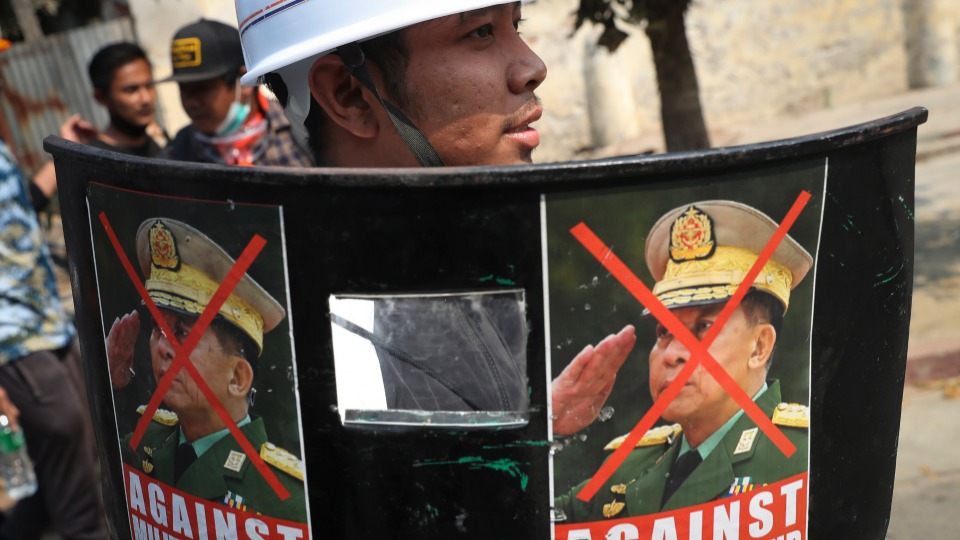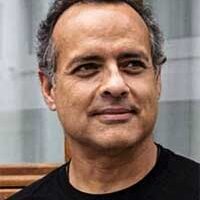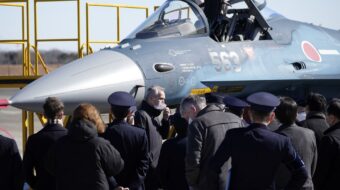
On Feb. 1, 2021, Myanmar’s military—known as the Tatmadaw—invoked Article 417 of the 2008 constitution, dismissed State Counselor Aung San Suu Kyi, and arrested her and other members of her National League for Democracy (NLD) party. Condemnation of the coup was swift, although there would be reason for hesitancy in the reaction: Aung San Suu Kyi, who had been the face of the democracy movement until her release from house arrest in 2010, ruined her reputation when she came to the International Court of Justice in 2019 to defend her country’s genocide against the Rohingya people. No longer is Aung San Suu Kyi the unalloyed symbol of democracy and human rights.
Within Myanmar, protests against the coup continue. Tens of thousands of people, many wearing red (the color of the NLD), have taken to the streets across Myanmar, not only in the more congested cities but also in the countryside, to protest the coup.
The momentum against the coup picked up when associations of civil servants refused to work for the military. While this wave began with medics, it escalated to involve workers in the railways, education, social welfare, and construction ministries. Staff in the Department of Social Welfare released a statement that read, “We will get back to work only after power is handed back to the democratically elected government.”
By the second week of February, protests entered Myanmar’s typically quiet capital city of Naypyitaw, with motorcycle parades and demonstrations at the main marketplaces. Myanmar’s military built this city as the capital and shifted all administrative offices from Yangon to this interior town in 2005. Naypyitaw was built with the intention that it would remain a military stronghold, safe for the rulers of the country who would not be disturbed by the messiness of democracy. However, in the elections of 2015 and 2020, the military’s election vehicle, the Union Solidarity and Development Party (USDP), did not prevail even in Naypyitaw, where the NLD won handily. It demonstrates the appetite among Myanmar’s public for a democratic process.
Myanmar’s military seized power of the country’s institutions in 1962. It has not yet turned over control to civilians. The 2008 constitution, written substantially by the military, provides a legal fiction to hang over military domination. One in four seats in the parliament—the Pyidaungsu Hluttaw—is held by a person nominated by the military. The military continues to hold the cabinet portfolios for defense and home affairs, both held until the coup by lieutenant generals in the Tatmadaw.
The constitution’s Article 417 allows the military to declare a “state of emergency” and dismiss the civilian fig leaf. This is exactly what the military did on Feb. 1. What happened that day was both a coup and not a coup; it was a coup because the military dismissed the civilian government and took power, but it was not a coup because the military did not hand over power after the 2010 elections (the military’s USDP ran unopposed and took over the government, exchanging fatigues for suits).
General Min Aung Hlaing had hoped to become the head of government after his term as commander in chief of Myanmar’s army ended. As it is, the general controls a substantial part of the economy through Myanmar Economic Holdings Limited (MEHL), an army conglomerate, and through the businesses of his children, Aung Pyae Sone and Khin Thiri Thet Mon. Sources in Yangon told me that in 2015 General Min Aung Hlaing’s close associate U Than Htay was put in charge of the USDP, ensuring that it became an instrument of General Min Aung Hlaing. The general took the defeat of the USDP in the November 2020 election personally; it was this animus that led to the tens of thousands of cases of election fraud alleged by the USDP against the NLD.
Before the November 2020 election, General Min Aung Hlaing warned the candidates not to be swayed by foreign influence. This was seen in Myanmar as a threat to the NLD. Accusations of fraud in that election did not carry weight even with the election commission. On Jan. 26, military spokesperson Major General Zaw Min Tun said that the military would act if the accusations were not taken seriously. This is precisely what they did a few days later.

China and Myanmar share a 1,300-mile border, with China being Myanmar’s largest investor and one of its key economic partners. A decade ago, the United States government attempted to wean Myanmar away from its links to China and to reorient its economy toward the U.S. This became part of President Barack Obama’s “pivot to Asia.” In 2007, Derek Mitchell, who would later become Obama’s special representative for Myanmar, co-authored an article that pointed out that sanctions had been ineffective and that a new “road map” was needed to reform the military.
Myanmar’s military had its own road map: It created a new constitution in 2008, held elections in 2010 that brought the USDP to power, released Aung San Suu Kyi from prison that year, and allowed her to run for elections in 2015. Obama went to Myanmar in 2012 and then the U.S. removed sanctions in October 2016, hoping that these moves would signal a shift from Myanmar’s links to Beijing toward Washington.
But this did not happen. Neither the military nor Aung San Suu Kyi could logically break trading ties with its neighbor. In May 2017, Aung San Suu Kyi went to Beijing to sign an agreement to bring Myanmar into China’s Belt and Road Initiative. In mid-January 2021, China’s Foreign Minister Wang Yi visited Naypyitaw to discuss the Belt and Road projects as well as China’s assistance to fight the COVID-19 pandemic. On the agenda was the China-Myanmar Economic Corridor, including the China-Myanmar Border Economic Cooperation Zone, New Yangon City, and the Kyaukpyu Deep Sea Port. Wang Yi met with both Aung San Suu Kyi and the military leadership, both of whom spoke warmly about Myanmar’s relations with China.
Washington’s attempt to push out China from Myanmar had no bearing on the Feb. 1 coup; both the military and NLD are committed to the strategic link with China. But it does not help that this “new cold war” has deepened the instability that marks Myanmar’s history since 1962.
The people are on the streets now in the midst of what they are calling a “drum revolution.” With each passing day, more and more people are joining the call for a return to civilian rule, even if this means going back to the status quo with the military pulling the strings in the background.
People’s Dispatch
Also read:
> Military coup leaders, Aung San Suu Kyi both betrayed democracy in Burma
> Myanmar military coup leaders target trade unions for destruction












Comments